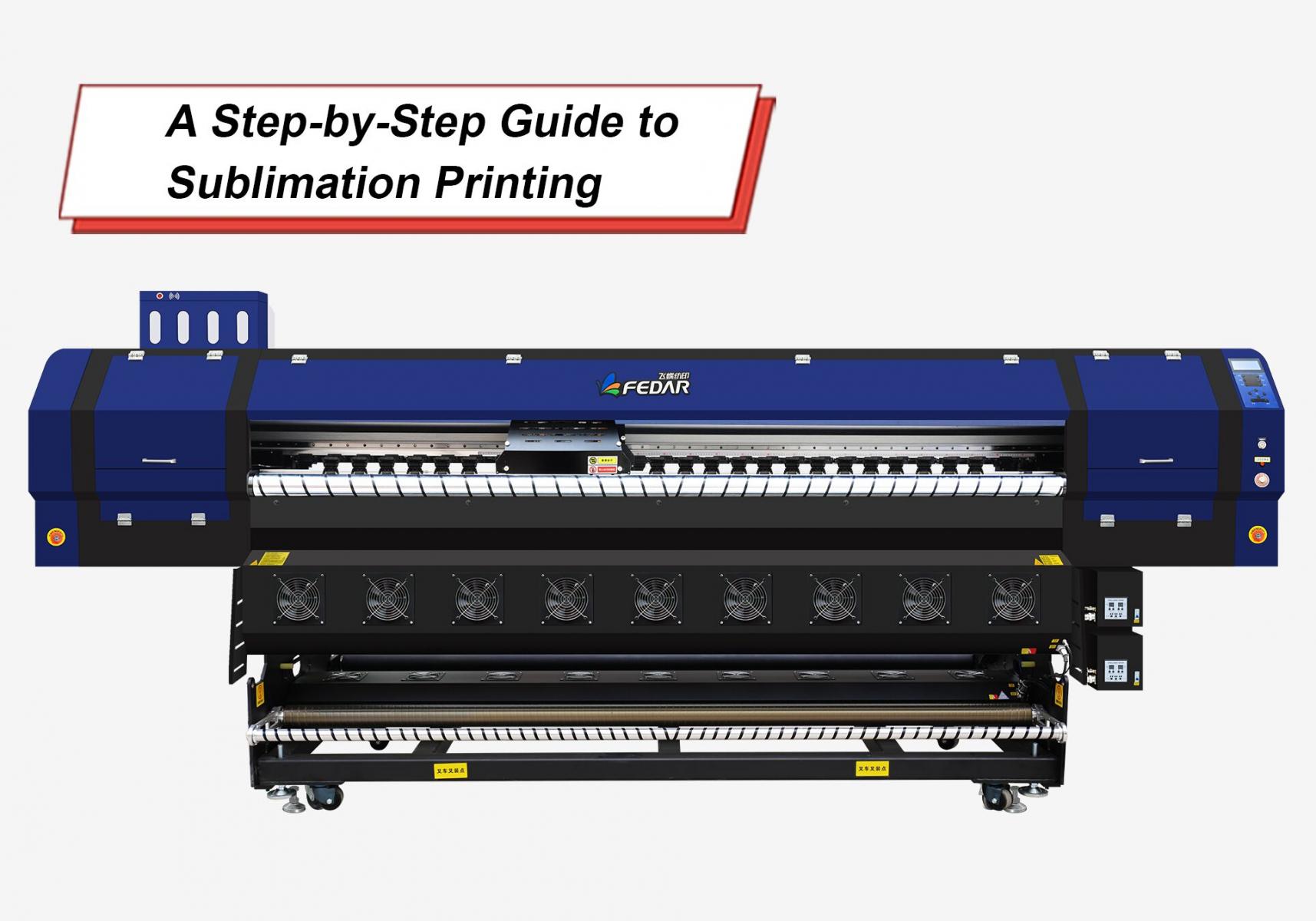04
Aug
Sublimation printing is a heat process that injects the design directly into the substrate such as polyester or coated substrates creating vibrant permanent images. In this article, you will learn what sublimation printing is, how it differs from other forms of printing, and the steps you need to take to print on products. Whether you are a complete beginner or just need a reminder, you will leave with everything you need to start with confidence.
Essentially, sublimation printing is a chemical process. It applies heat and pressure to inject dye directly into a substrate, usually items made of or coated with polyester or polymer. Let us explain how it works:
Your design is printed by a sublimation printer onto a transfer paper using special sublimation inks.
The design is printed on a piece of paper and laid down onto the item to be printed on.
Heat is applied using a heat press.
The heat causes the solid dye to become gaseous (sublimation) rather than liquid.
The gas interacts with the surface of the piece and becomes infused with the design.
The ink isn’t sitting on the surface of the product; it becomes part of the product. This is why sublimated prints do not crack, peel, or fade easily. They are especially vibrant and longer-lasting, which is a big plus for anyone selling or gifting prints.

Why not just screen print, use vinyl, or heat transfer? You may be asking. There’s a role for each of these, but the advantage of sublimation is:
Durability: While vinyl rests on the surface of fabrics or materials, sublimation dye permeates the material itself. This means that the print will not peel or wash off.
Vibrancy: Sublimation inks yield bright, full-color images, particularly when printing on white or light colored polyester.
Texture: The ink melts into the material, keeping the texture smooth.
Flexibility: It can be used on various things, including shirts, mugs, coasters, puzzles, mousepads, phone cases, etc.
Ready to try sublimation printing yourself? Here’s a breakdown of the full process:
You’ll need:
A sublimation printer, such as an Epson EcoTank printer with sublimation inks
Ink for sublimation
Sublimation papers
A heat press, flat or mug press, depending on what you are making
Blanks (the term for products made of polyester or coated with polymer)
Heat-resistant tape and sheets (butcher paper or Teflon)
Create images with Photoshop, Adobe Illustrator, or free programs such as Canva. Check that your color profile is RGB and that your resolution is 300 DPI; this will produce the best quality print. Don’t forget that you need to reverse the image for printing; it will be correct once transferred.
Using your sublimation printer, print your mirrored image onto sublimation paper. Make sure to print using the proper settings, high quality, and appropriate paper type to prevent color bleeds or fades.
Remove dust, lint, or oil from the blank item. Clean any habits that you may have personally made that are not giving you anxiety. Lint rollers work for clothing, and isopropyl alcohol can be used on hard surfaces.
Position the printed side of the sublimation paper face down on the item and tape into place using heat-resistant tape. Make sure to cover this with protective paper so you do not get ink on your heat press.
Heat and pressure are then applied:
For mugs: about 400 degrees F for 180 seconds
For t-shirts: ~385-400 f° for 45-60 seconds
For phone cases/coasters: 60 seconds at 400 degrees
Supplier settings are always to be followed.
When the time is up, gently peel the paper away while the paper is still warm (use gloves if necessary). Allow the item to cool completely before handling or boxing.
The wide use of sublimation is one of its best features. Among the common items you can personalize are:
T-shirts and apparel (only polyester or poly-blends)
Mugs and tumblers
Phone cases
Mousepads
Keychains
Pillows and home décor
Photo slates or panels
Just make sure that the item is either 100% polyester or has a special sublimation coating. Normal items will not do the trick.
Here are a few common mistakes that can be easily avoided to get a smooth printing experience:
Not mirroring the design: Prints are backward.
Wrong choice of material: Sublimation does not work on cotton or uncoated surfaces.
Over-pressing or under-pressing: Heat that is excessively high leads to fading or ghosting of color, while low heat leads to prints that are dull.
Wrong color settings: If you want the colors you see on your screen to match when printing, use an ICC profile from your ink manufacturer.
Not testing on sample prints: Never go to the final without first testing on a sample print.
Sublimation printing may seem complicated at first, but once you learn the process and acquire the necessary materials, it is a fun and addictive form of art and creation. This process gives you the quality, durability, and flexibility whether you want to create a small printing business or create personal gifts with intention.
This guide will provide you with the information you need to start your journey without wasting time and money on trial and error. So grab your blank, heat that heat press, and get to making!
If there's anything we can do to further showcase machines' features, please let us know.
Email: sale@fedar.net
Whatsapp: http://wa.me/8615515715397
Our company has over 30 models of printers with independent intellectual property rights and patents. Marketed under the esteemed brands of Skycolor, Stormjet, and Fedar brands, these printers cover a wide range, including digital textile printers, UV printers, eco-solvent printers and more. Known for their exceptional quality and performance.
